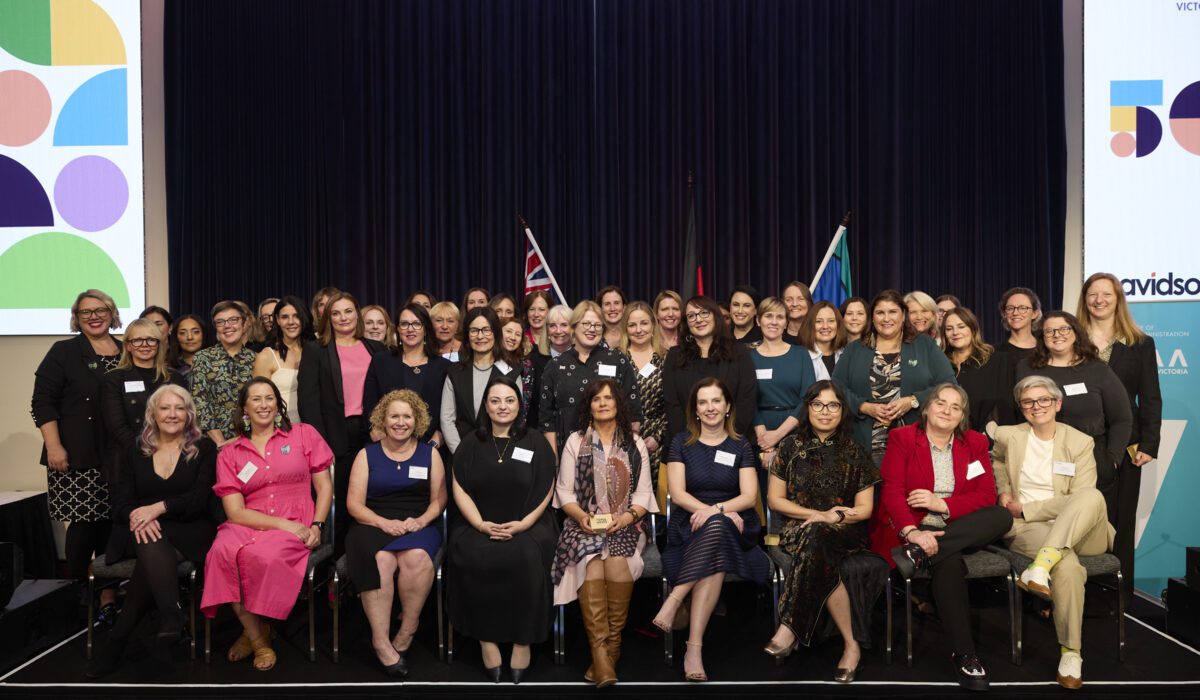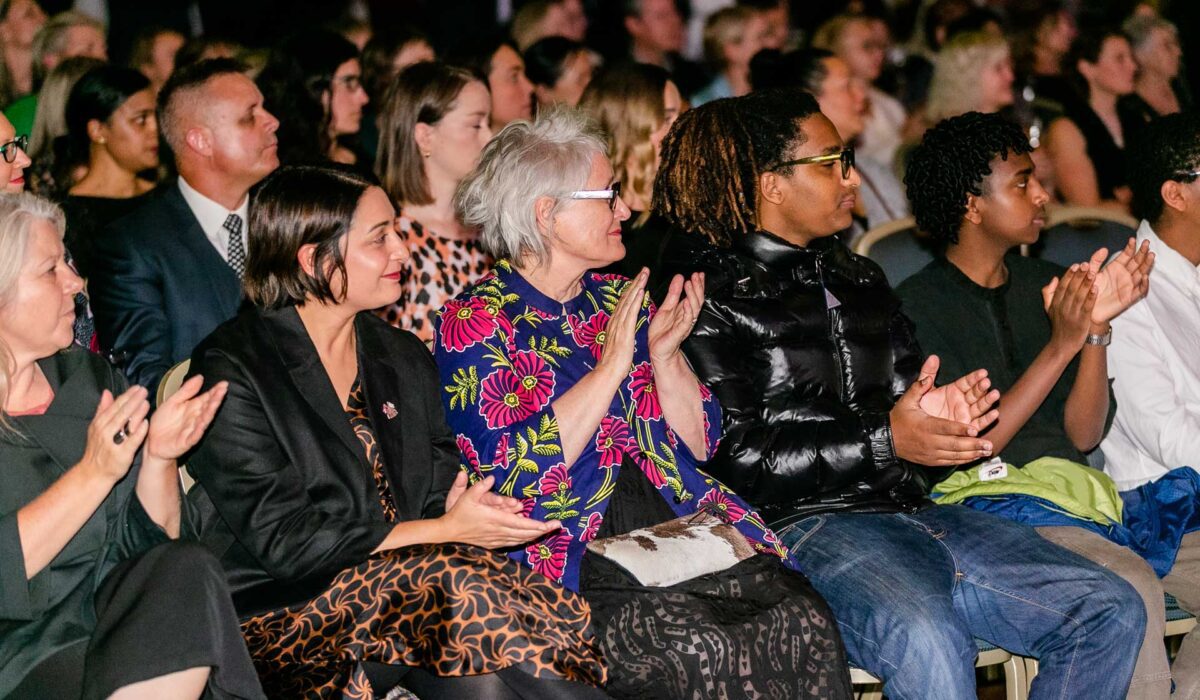
As part of IPAA Victoria’s Diversity and Inclusion Series, we have partnered with Aware Super to explore how the Gender Pay Gap is driven by pay inequality, disproportionate positions of leadership and undervaluing highly feminised sectors. Community-wide action, gender-blind promotion and development opportunities and greater balance in domestic caring responsibilities are some ways to close the gap, writes Aware Super.
Bridging the Gap
What is the Gender Pay Gap? A good question, especially as almost one quarter (24.8%) of Australian men* don’t believe it exists – perhaps because the meaning is unclear, or because they don’t see it in their industry as much as others.
Aware Super CEO and Workplace Gender Equality Agency Equal Pay Ambassador Deanne Stewart says persistent pay gaps based on gender aren’t a silent conspiracy to underpay women. Rather, they’re much more insidious, Ms Stewart says, reflecting an unconscious bias in the way we build and maintain our education and employment systems as well as the cultural norms surrounding the roles men and women play in society.
“Equal pay for women and men has been a legal requirement in Australia since 1969,” she says. “In reality though, the gender pay gap is much more than about rates of pay – it’s about how we educate our young people, how we help teenagers plan for their future careers, and how we support employees with caring responsibilities.”
So then, what exactly is the Gender Pay Gap? It is the gap in average salary that exists between male and female workers in a given industry, not about pay in like-for-like roles. The Gender Pay Gap is driven by pay inequality, disproportionate positions of leadership and undervaluing highly feminised sectors. It is up to all Australians to close it, not just women.
A crucial step in improving transparency was taken earlier this year when the Workplace Gender Equality Agency (WGEA) called for all Australian businesses to publish their Gender Pay Gap on their websites.
This marks a generational opportunity to educate corporate Australia and the wider Australian public on the systemic issues that are maintaining the national Gender Pay Gap, and some of the solutions we can all work towards to close it. The Aware Super Hold the Door report, identifies and explores these very issues, known as the five closed doors faced by women in their careers, and key drivers of gender inequity.
The first closed door starts even before school when unconscious bias and gendered stereotypes are in full swing. It’s when Mum stays home to look after the pre-schoolers and Dad goes to work each day; it’s at school where the teachers are women and the principal is a man. It’s when a ‘rowdy boy’ is seated next to a ‘good girl’.
The second door is career selection. Following less exposure to subjects like maths and science, ‘gender appropriate’ career paths are already forming with females more likely to be encouraged into ‘care’ roles, often resulting in decreased opportunities to progress in leadership.
Caring duties is another example of a key driver of the gender pay gap. Caring responsibilities still fall primarily to women with 7 in 10 primary carers being women. This makes a material difference to lifetime income and retirement savings, as women’s earnings fall by an average of 55% in the first five years of parenthood, making the impact of lost super savings during this time significant. But it is the ‘unofficial caring’ that extends on from the first five years – that is, caring for a sick child or an elderly or disabled parent or returning to work part-time to keep things running – that significantly contributes to an ‘out of sight, out of mind’ scenario faced by working women. In turn, this becomes a hindrance to career progression.
According to the Victorian Commission for Gender Equality in the Public Sector, women comprised 79% of parental leave takers, and within the public healthcare and Victorian Public Service industry groups, nearly 9 in 10 parental leave takers were women**.
Adding to this, the average woman who took parental leave accessed 20 weeks of paid leave and 22 weeks of unpaid leave, while the average man took 4 weeks of paid and 2 weeks of unpaid parental leave (CGEPS Baseline report)**. These are key proof points that without societal mindset change, the persistent gender pay gap will be exactly so.
The culmination of all these years of unconscious bias results in missed opportunities – for career progression, for leadership and for earning potential for women. And due to the well-known power of compounding in superannuation, that loss of earnings during the working years is dramatically amplified as loss of accumulated savings for retirement – meaning less income in retirement, and a consequently lesser quality of life for retired women. Now more than ever there’s the opportunity to work towards closing this gap, changing the systemic problems so awareness of the need to change is not moving faster than the pace of change itself.
Now is the time for us to call for community-wide action to make amends for unconscious bias, starting during the education years, during career selection, through pay equity in the workplace, gender-blind promotion and development opportunities for employees throughout their careers, and through a greater balance in domestic caring responsibilities. Now is the time to close the gap.
Visit Aware Super’s website here.
The opinions expressed above are those of the author and do not necessarily reflect the views of IPAA Victoria.
Gender pay gap values derived from the latest ABS AWE numbers released on 18/07/2023. Times calculated based on an average 40-hour working week. The projection is based on an average 32-year-old Australian woman with a salary $1,686 per week staying constant in real terms. Retirement balances are rounded to the nearest $1,000 and are stated in today’s dollars, deflated using Average Weekly Ordinary Time Earnings (AWOTE) at 4.0% p.a. The projection assumes that a woman gives birth at age 32, and then 34 and 36 if they have a second or third baby. The part-time period starts immediately at age 32. The assumed investment option is a standard Growth option (Aware’s Balanced Option) returning CPI + 3.95% before admin fees.
*Research conducted by Pure Profile, commissioned by Aware Super, January 2024
**Aware Super, Hold the Door Report, https://aware.com.au/member/campaign/international-womens-day

